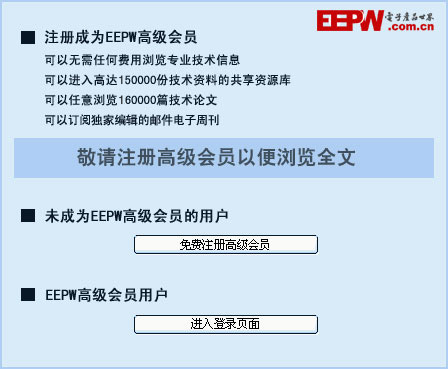ADI ADuC702x脈搏血氧儀解決方案
脈搏血氧儀以非介入方式測量血液中的含氧量,包括發(fā)射路徑,接收路徑,顯示和背光,數(shù)據(jù)接口以及音頻報警。發(fā)射路徑包括紅光LED,紅外光LED和用于驅動LED的DAC。接收路徑包括光電二極管傳感器,信號調理,模數(shù)轉換器和處理器。ADI的脈搏血氧儀解決方案采用ADuC7024精密模擬微控制器,具有多達16路的12位1MSPS的ADC和采用ARM7TDMI核16位/32位RISC架構的MCU.本文介紹了ADuC7019/20/21/22/24/25/26/27/28/29主要特性和功能框圖, ADuC7024評估板主要特性, 電路圖和材料清單,以及ADI脈搏血氧儀功能框圖及其主要元件表, 脈搏血氧儀演示系統(tǒng)框圖和所用的主要產(chǎn)品表.
The ADuC7019/20/21/22/24/25/26/27/28/29 are fully integrated, 1 MSPS, 12-bit data acquisition systems incorporating high performance multichannel ADCs, 16-bit/32-bit MCUs, and Flashreg;/EE memory on a single chip.
The ADC consists of up to 12 single-ended inputs. An additional four inputs are available but are multiplexed with the four DAC output pins. The four DAC outputs are available only on certain models (ADuC7020, ADuC7026, ADuC7028, and ADuC7029). However, in many cases where the DAC outputs are not present, these pins can still be used as additional ADC inputs, giving a maximum of 16 ADC input channels. The ADC can operate in single-ended or differential input mode. The ADC input voltage is 0 V to VREF. A low drift band gap reference, temperature sensor, and voltage comparator complete the ADC peripheral set.
Depending on the part model, up to four buffered voltage output DACs are available on-chip. The DAC output range is programmable to one of three voltage ranges.
The devices operate from an on-chip oscillator and a PLL generating an internal high frequency clock of 41.78 MHz (UCLK). This clock is routed through a programmable clock divider from which the MCU core clock operating frequency is generated. The microcontroller core is an ARM7TDMIreg;, 16-bit/32-bit RISC machine, which offers up to 41 MIPS peak performance. Eight kilobytes of SRAM and 62 kilobytes of nonvolatile Flash/EE memory are provided on-chip. The ARM7TDMI core views all memory and registers as a single linear array.
On-chip factory firmware supports in-circuit serial download via the UART or I2C serial interface port; nonintrusive emulation is also supported via the JTAG interface. These features are incorporated into a low cost QuickStart™ development system supporting this MicroConverterreg; family.
The parts operate from 2.7 V to 3.6 V and are specified over an industrial temperature range of −40℃ to +125℃. When operating at 41.78 MHz, the power dissipation is typically 120 mW. The ADuC7019/20/21/22/24/25/26/27/28/29 are available in a variety of memory models and packages (see Ordering Guide).
ADuC7019/20/21/22/24/25/26/27/28/29主要特性:
Analog I/O
Multichannel, 12-bit, 1 MSPS ADC
Up to 16 ADC channels1
Fully differential and single-ended modes
0 V to VREF analog input range
12-bit voltage output DACs
Up to 4 DAC outputs available1
On-chip voltage reference
On-chip temperature sensor (±3°C)
Voltage comparator
Microcontroller
ARM7TDMI core, 16-bit/32-bit RISC architecture
JTAG port supports code download and debug
Clocking options
Trimmed on-chip oscillator (±3%)
External watch crystal
External clock source up to 44 MHz
41.78 MHz PLL with programmable divider
Memory
62 kB Flash/EE memory, 8 kB SRAM
In-circuit download, JTAG-based debug
Software-triggered in-circuit reprogrammability
On-chip peripherals
UART, 2× I2Creg; and SPI serial I/O
Up to 40-pin GPIO port1
4× general-purpose timers
Wake-up and watchdog timers (WDT)
Power supply monitor
3-phase, 16-bit PWM generator1
Programmable logic array (PLA)
External memory interface, up to 512 kB1
Power
Specified for 3 V operation
Active mode: 11 mA @ 5 MHz, 40 mA @ 41.78 MHz
Packages and temperature range
From 40-lead 6 mm × 6 mm LFCSP to 80-lead LQFP1
Fully specified for –40℃ to +125℃ operation
Tools
Low cost QuickStart™ development system
Full third-party support
ADuC7019/20/21/22/24/25/26/27/28/29應用:
Industrial control and automation systems
Smart sensors, precision instrumentation
Base station systems, optical networking
圖1.ADuC7026方框圖
圖2.ADuC7020典型系統(tǒng)配置圖
ADuC7024評估板
Development system for evaluation of the ADuC7024/25, fully integrated, 1 MSPS, 12-bit data acquisition systems incorporating high performance multichannel ADCs, 16-bit/32-bit MCUs, and Flash/EE memory on a single chip.
ADuC7024評估板主要特性:
• 2-layer PCB (4” 5” form factor)
• 9 V power supply regulated to 3.3 V on board
• 4-pin UART header to connect to RS232 interface cable
• 20-pin standard JTAG connector to connect to ULINK emulator
• Demonstration circuit
• 32.768 kHz watch crystal to drive the PLL clock
• ADR291 2.5 V external reference chip
• Reset/Download/IRQ0 push-buttons
• Power indicator/general-purpose LEDs
• Access to all ADC inputs and DAC outputs from external header. All device ports are brought out to external header pins.
• Surface-mount and through-hole general-purpose prototype area
圖3.ADuC7024評估板電路圖
ADuC7024評估板材料清單:
ADI脈搏血氧儀解決方案
脈搏血氧儀以非介入方式測量血液中的含氧量,它以完全飽和水平的百分比來衡量,用單一數(shù)值來表示,即所謂血氧飽和百分比,常常稱之為SpO2。該測量基于血液中血紅蛋白的光吸收特性。在可見光譜和近紅外光譜內,含氧血紅蛋白(HbO2)與脫氧血紅蛋白(Hb)具有不同的吸收曲線。Hb吸收的紅光頻率的光線較多,紅外光(IR)頻率的光線較少。HbO2則相反,吸收的紅光頻率的光線較少,紅外光(IR)頻率的光線較多。紅光和紅外光LED盡可能相互靠近,通過人體中的單一組織位置透射光線。紅光和紅外光LED采用時間復用處理來透射光線,因此不會相互干擾。環(huán)境光線經(jīng)過估算后,從紅光和紅外光信號中減去。一個能夠響應紅光和紅外光的光電二極管接收光線,然后由一個跨導放大器產(chǎn)生與所接收光線強度成比例的電壓。光電二極管接收的紅光與紅外光的比值用于計算血液中的氧氣百分比。根據(jù)血液流動的脈沖特性,還會在測量周期中確定并顯示脈搏率和強度。
脈搏血氧儀包括發(fā)射路徑、接收路徑、顯示和背光、數(shù)據(jù)接口以及音頻報警。發(fā)射路徑包括紅光LED、紅外光LED和用于驅動LED的DAC。接收路徑包括光電二極管傳感器、信號調理、模數(shù)轉換器和處理器。
脈搏血氧儀系統(tǒng)設計考慮和主要挑戰(zhàn)
設計脈搏血氧儀系統(tǒng)時,需要解決多個難題,如低血流灌注、運動和皮膚濕度、雜散光干擾、碳氧血紅蛋白和高鐵血紅蛋白干擾等。
• 低血流灌注(小信號水平)。光電二極管測量需要寬動態(tài)范圍和低噪聲增益的信號調理,以便捕捉脈搏事件。發(fā)射和接收路徑需要具有高分辨率DAC的高質量、低噪聲LED驅動電路和具有高分辨率ADC的高精度模擬前端電路。
• 運動和皮膚濕度。運動會引起偽像,這可以通過軟件算法來解決,或者利用ADXL345等加速度計來檢測并解決。
• 雜散光干擾。使用光電二極管來響應紅光和紅外光,它很容易受環(huán)境光干擾。因此,用于過濾出紅光和紅外光目標信號的算法非常重要,這意味著信號處理更加復雜。這種情況下,需要使用具有更高信號處理能力的DSP。
• 碳氧血紅蛋白和高鐵血紅蛋白。一氧化碳(CO)很容易與血紅蛋白結合,使血液變得更像紅色HbO2,導致測得的SpO2值虛高。血紅素基中的鐵處于異常狀態(tài),無法攜帶氧(Fe+3而不是Fe+2),導致血紅蛋白減少,SpO2讀數(shù)虛低。使用更多波長可以提高精度,但這需要更高性能的數(shù)字處理DSP。處理時間至關重要。
圖4. 脈搏血氧儀解決方案外形圖
圖5.脈搏血氧儀功能框圖
脈搏血氧儀功能框圖中主要元件表:

圖6. 脈搏血氧儀演示系統(tǒng)框圖
脈搏血氧儀應用主要產(chǎn)品表:
更多醫(yī)療電子信息請關注:21ic醫(yī)療電子頻道
模數(shù)轉換器相關文章:模數(shù)轉換器工作原理
透射電鏡相關文章:透射電鏡原理













評論